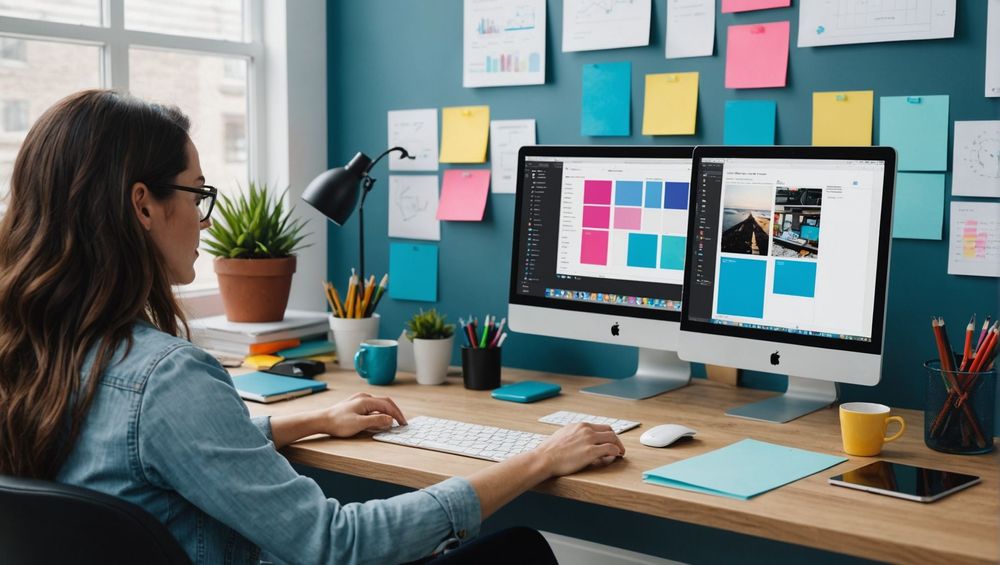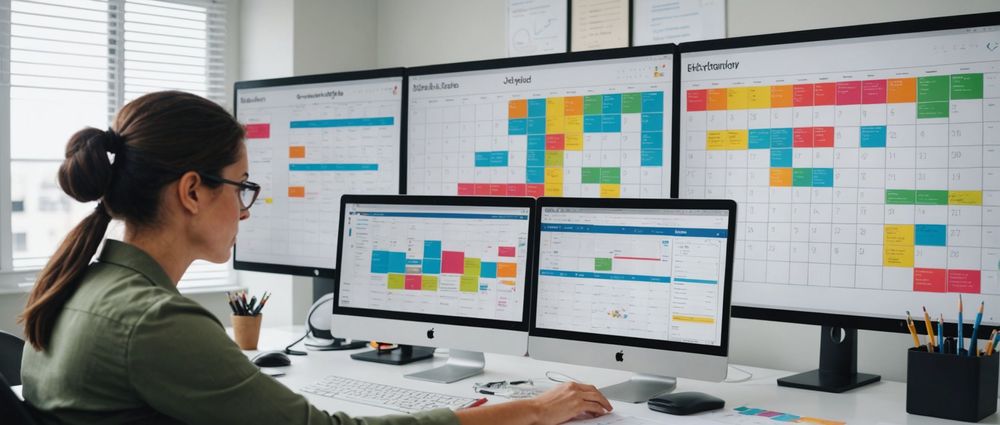The realm of creative design demands tools that foster collaboration, enhance productivity, and streamline workflows. Selecting the best design collaboration software is crucial for success in such a dynamic field. Below, we explore five top-notch tools that help creatives bring their visions to life seamlessly.
1. Figma

Figma has revolutionized the way designers collaborate, making it effortless to work on design projects with teams, regardless of location. One of its standout features is real-time editing, which allows multiple users to work on the same design simultaneously. This means less back-and-forth and an increase in productivity.
Figma also supports vector networks and flexible styles, making it versatile enough for a variety of design tasks. With robust version control and an intuitive interface, it’s easy for teams to keep track of changes and iterate quickly. Organizations love Figma for its cloud-based approach, which ensures everyone has access to the latest version of the design.
- Real-time collaboration
- Vector networks and flexibility
- Cloud-based storage and access
2. Adobe XD

Adobe XD stands out as a powerful tool for UI/UX designers. Its deep integration with other Adobe Creative Cloud apps makes it especially convenient for designers who rely on a suite of Adobe products. With features like repeat grid and auto-animate, it is easier than ever to create detailed wireframes and interactive prototypes.
This tool also supports voice prototyping and responsive resize, adapting effortlessly to the increasing variety of devices and screen sizes. Moreover, Adobe XD enables live previews on mobile devices, which is essential for real-time user testing. The ability to share designs and gather feedback through shared links simplifies the entire design process from concept to completion.
- Seamless integration with Adobe Creative Cloud
- Advanced prototyping features
- Responsive design tools
3. Sketch

Sketch remains a favorite among many designers for its simplicity and power. Though it’s exclusively available for macOS, it’s worth considering due to its robust toolkit for vector graphics and prototyping. Sketch’s symbols and shared styles enhance consistency across large project files, making it easier to maintain brand guidelines.
Additionally, Sketch offers a plethora of plugins that can further extend its functionality to meet specific needs. The tool also provides extensive resources and a supportive community, which is great for best practices and troubleshooting. Sketch’s commitment to regular updates ensures it keeps pace with the evolving demands of the design industry.
- Intuitive vector tools
- Robust plugin ecosystem
- Community-driven support
4. InVision
InVision is more than just a design tool; it’s a comprehensive platform for digital product creation that emphasizes collaboration. It allows teams to create prototypes, iterate designs, and manage workflows all in one place. InVision’s collaborative features make it easy to get feedback through comments, which can be pinned to specific points in a design.
The platform integrates well with other tools like Sketch and Photoshop, enhancing its utility in various workflows. InVision also offers a powerful design system management feature called DSM, which helps teams maintain design consistency across multiple projects. This is particularly valuable for large organizations with extensive branding needs.
- Prototyping and feedback integrated
- Seamless integration with other design tools
- Design System Management (DSM) for consistency
5. Miro
Miro is an excellent whiteboarding tool that is gaining traction among creative professionals. It’s particularly useful for brainstorming sessions, wireframing, and planning, offering an infinite canvas that can accommodate all kinds of media and inputs. Teams can collaborate in real-time, making it an ideal tool for remote work.
The tool also provides various templates to kickstart projects and streamline workflows. Miro’s integration capabilities with tools like Slack, Jira, and Microsoft Teams enhance its versatility. This makes it easier to embed design processes within broader project management and communication frameworks.
- Real-time collaborative whiteboard
- Rich template library
- Integrations with popular tools
Conclusion
Choosing the right design collaboration software can significantly impact creative workflows and project outcomes. Tools like Figma, Adobe XD, Sketch, InVision, and Miro offer a range of features that cater to different aspects of design—from real-time collaboration and prototyping to design consistency and planning. Selecting the suitable tool for your needs depends on factors like team size, specific project requirements, and existing tool integrations. Embrace these tools to enhance your creativity and streamline your design process.
FAQ
1. What is the best design collaboration software for UI/UX design?
Adobe XD is highly regarded for UI/UX design due to its advanced prototyping features, responsive design tools, and seamless integration with other Adobe Creative Cloud apps.
2. Can Figma be used offline?
Figma is primarily a cloud-based tool, but it does offer limited offline capabilities. However, for the best experience, an internet connection is recommended.
3. Is Sketch available for Windows?
No, Sketch is exclusively available for macOS. Windows users might consider alternatives like Figma or Adobe XD.
4. How does InVision’s Design System Management (DSM) work?
InVision’s DSM helps teams create, maintain, and share a consistent design language across projects. It centralizes design components and styles to ensure uniformity.
5. What unique features does Miro offer for design collaboration?
Miro’s real-time collaborative whiteboard, rich template library, and integrations with tools like Slack, Jira, and Microsoft Teams make it an excellent choice for design planning and brainstorming sessions.









